Wilson marine cellular, the testing begins
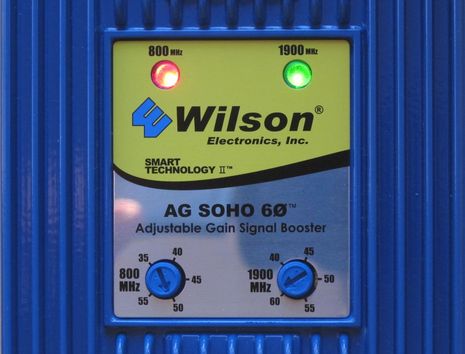
I probably made the PR guy's day! He called out of the blue with two questions -- did I think that many boaters care about cellular boosters and had I heard of Wilson Electronics? -- and my reply was not only "heck, yes" on both counts but also a report on how pleased I already was with the Wilson amp I installed on Gizmo last September. The company may have just decided to pay attention to the boat world, but I was more than ready to test the box of Wilson gear that recently showed up at Panbo HQ...
First I'll touch on some things I've learned about cell booster technology over the years, because it's trickier than you might presume. Check out this this 2004 PMY article; just the subtitle -- "Lying handsets, wireless wireless, and other marine cellular shenanigans" -- suggests the trickiness I encountered in testing. It was hard, for instance, to tell how well a booster worked because the typical four or five bar indicator at the top of a phone screen is generally inaccurate and/or slow to respond to changing conditions. Plus the cell service providers didn't want to even acknowledge boosters anyway.
The situation got worse after I wrote that piece. Fewer and fewer cell phones came with an external antenna port that could be wired to a booster (which was an annoyance) and the solution of repeating the cell signal inside your boat, and re-transmitting your outgoing signals from your mast, turned out to be problematical. Several owners and installers told me that their $500+ repeater systems didn't seem to do anything -- probably because of "oscillation" issues, I was learning -- and stories went around about how boosters could mess up cell towers and bring down the wrath of the FCC, AT&T, Verizon. etc. Yikes!
In fact, at one point the FCC considered banning all cell boosters, but when looking for information about this I found an impressive interview with the COO of Wilson Electronics. And when Pat Harmon detailed his successful boat booster install on Panbo in 2010, it was Wilson gear he used. Despite the complications, this company has built a solid reputation and its pricing seems very competitive...
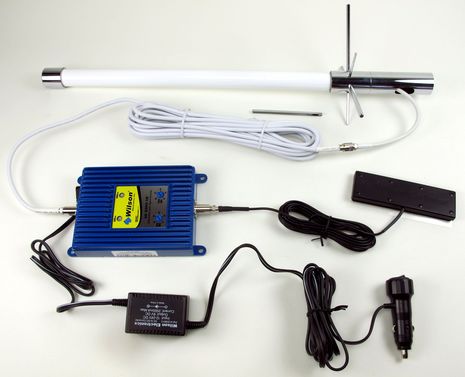
If you poke around the Wilson Electronics site, you'll see that they offer a large variety of booster bits, but photographed above is a fairly typical marine system they sent for testing. At top is the Marine Antenna (I didn't know they offered) which retails for about $170 but seems available for $100. The blue booster is a SOHO 60 ($250 street
), which has some neat features I'll get into further along, and then there's that rectangular Low Profile inside antenna at about Amazon $16
and the 12v-to-6v adapter you may need as the SOHO comes with an AC version...
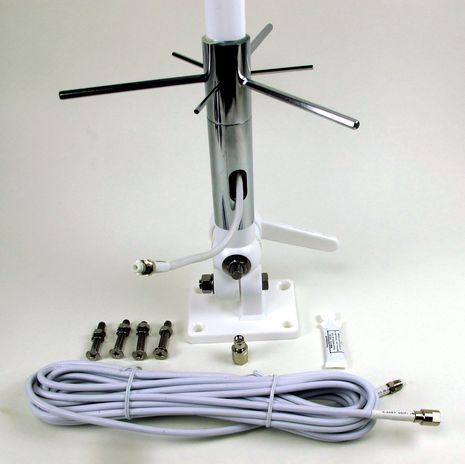
The build quality of everything looks good to me, with the possible exception of the 21-inch marine antenna. What worries me are those "chrome-plated" bars you screw in to create the unusual "radial ground plane." On the other hand, Wilson does supply that little tube of goo to secure their threads as well as that optional stainless coupler that lets you exit the cable above the base. And many installers will like the pigtail as it makes it easy to upgrade to low loss LMR400 type cable (which Wilson also sells) instead of the RG58 shown. This antenna will also handle a very wide assortment of cellular frequencies, another complication I'll get to...
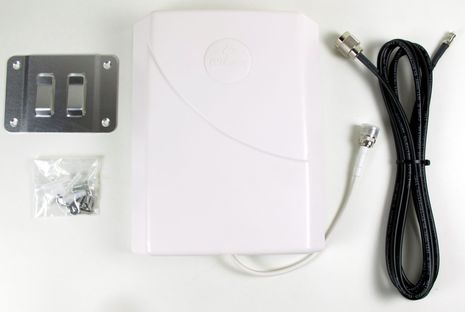
What's installed on Gizmo now, and really helped me stay in touch while travelling south, is a 30-inch Digital Antenna 561 cell stick cabled to a Wilson 801201 amp and then to their cradle antenna. So I don't have to worry about a feedback loop but then again my phone only gets boosted when in the cradle. I don't mind that much -- especially as I am usually using my "old guy Bluetooth headset" -- but my guests and crew would probably appreciate an inside antenna with more range. So I'm excited about trying not just that Low Profile antenna but also the more serious directional Panel Antenna seen above...
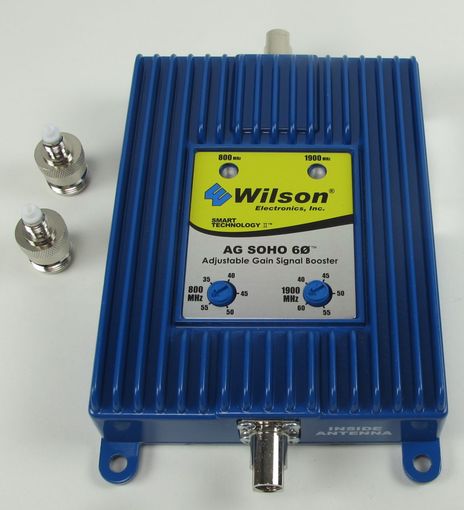
That's where the special features of the AG SOHO 60 come in. You can not only adjust the amount of gain used for the two major cell bands to avoid oscillation between the inside and outside antennas -- also useful for saving power when you're only using one band -- but on startup the unit tests for problems, uses its LEDs to show what's going on, and will even shut down a band if needed. In fact, that's why the 800 MHz LED seen in the top photo is red! Though I set up the Marine Antenna on a 10-foot pole outside the lab and pointed the panel away from it, apparently the signals got mixed up until I moved the panel further further into the basement or turned the gain down more. Cellular repeating is tricky, especially when the outside antenna covers 360 degrees of horizon as a boat antenna must...
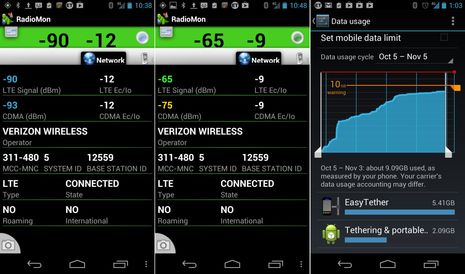
But once set up properly I did see what seemed to be improved cellular performance from the Wilson-boosted signal in my basement lab. I think I've also found a software tool that properly measures it. The left RadioMon screen on my Android phone above shows the signal without boosting while the middle screen shows the improvement. It's not a radical improvement but not trivial either and every bit helps for voice and data, I think. And note that the phone's signal status stayed at two bars the whole time! (I threw the third screen in to indicate just how important good cell coverage can be when cruising; without good WiFi in many places, my phone data usage got somewhat extreme.)
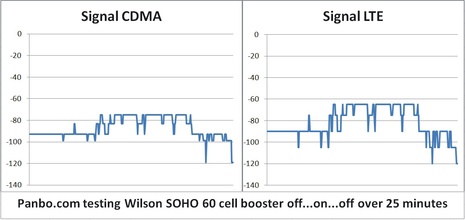
The RadioMon app can also log signal strength and deliver the logs via email. Thus I was able to graph a 25-minute session during which the phone never moved but the SOHO 60 was turned on and then off again. Pretty persuasive, don't you think? Of course the real test will be when I get this gear installed on Gizmo and start gunkholing my way north. It seems that Wilson has improved the chances of successful cell repeating on a boat, or at least I don't see the same self testing and gain control on the highly regarded Digital Antenna Powermax marine repeaters.
But, darn it, there are new complications to cell boosting in the age of 4G data. LTE uses frequencies outside the regular cell bands, which were already confusing enough as indicated in the table below. The Wilson antennas cover those new frequencies but the SOHO 60 doesn't yet, though it didn't show in my testing. However, the company already has some 4G cradle-style boosters and will soon have a SOHO-style model that will be switchable between the different 4G providers. Cell boosting is complex!


 Share
Share
It would be really nice for boaters if they also did WiFi from the same unit. The frequencies are right there...